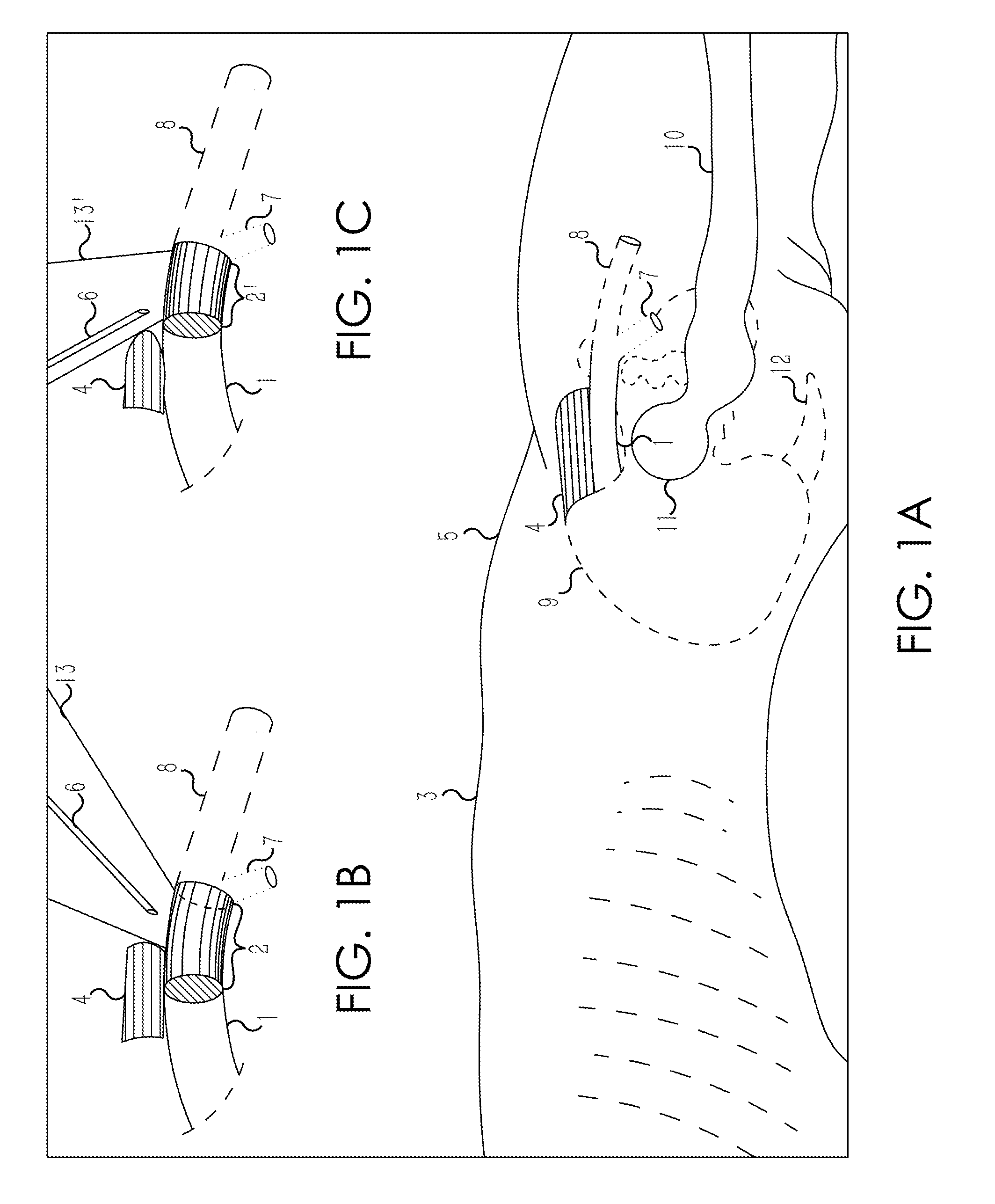Retrograde entry antegrade placement for femoral artery access
a technology for femoral arteries and antegrade placement, which is applied in the direction of applications, ultrasonic/sonic/infrasonic diagnostics, catheters, etc., can solve the problems of crimping or, worse, laceration, and insurmountable technical challenges in the antegrade approach to a large patien
- Summary
- Abstract
- Description
- Claims
- Application Information
AI Technical Summary
Benefits of technology
Problems solved by technology
Method used
Image
Examples
Embodiment Construction
[0072]Retrograde Entry Antegrade Placement (REAP) For SFA Access
[0073]The following will describe various apparatus and various method steps utilized in retrograde entry for antegrade placement of endovascular devices via SFA access.
[0074]Step 1. FIG. 8A shows the operator, patient, and equipment in alternate positions. Referring now to FIG. 8A, Operator 29 is positioned on Patient 30's right side, as for any traditional femoral artery entry angiographic procedure. The C-Arm X-Ray Machine 31 may be positioned opposite or adjacent to Operator 29 and is movable in the directions indicated by the arrows. C-Arm X-Ray Machine 31 is used to perform fluoroscopic and angiographic imaging. Monitors 32 are positioned at the patient's left, at torso level. Referring now to FIG. 8B, ultrasound is used to acquire data including the distance from Skin 35 to CFA 1, the lumen diameter of CFA 1, and location of the orifice of the take-off of PFA 7 and the location of the origin of CFA 1. Operator 29...
PUM
 Login to View More
Login to View More Abstract
Description
Claims
Application Information
 Login to View More
Login to View More - R&D
- Intellectual Property
- Life Sciences
- Materials
- Tech Scout
- Unparalleled Data Quality
- Higher Quality Content
- 60% Fewer Hallucinations
Browse by: Latest US Patents, China's latest patents, Technical Efficacy Thesaurus, Application Domain, Technology Topic, Popular Technical Reports.
© 2025 PatSnap. All rights reserved.Legal|Privacy policy|Modern Slavery Act Transparency Statement|Sitemap|About US| Contact US: help@patsnap.com



